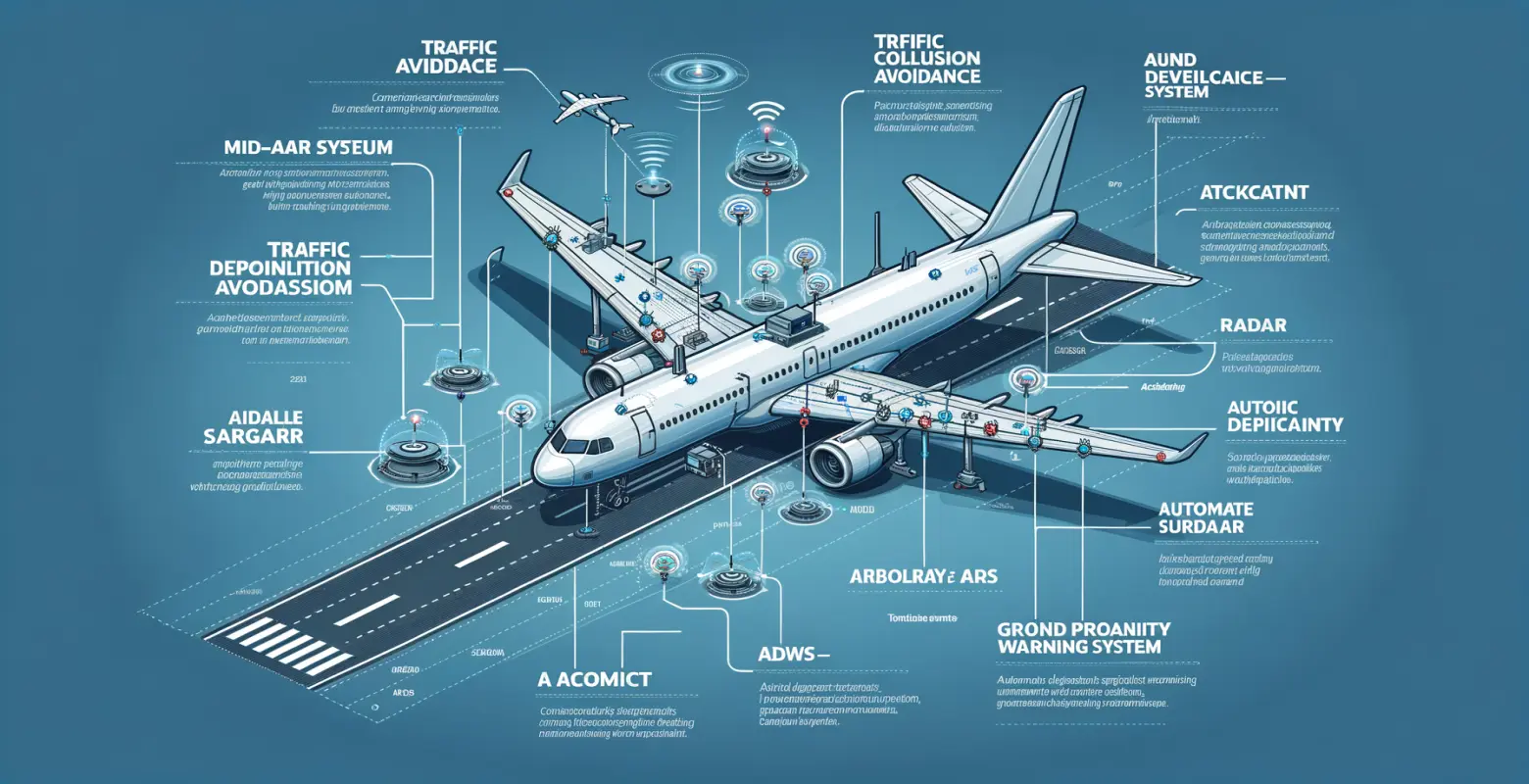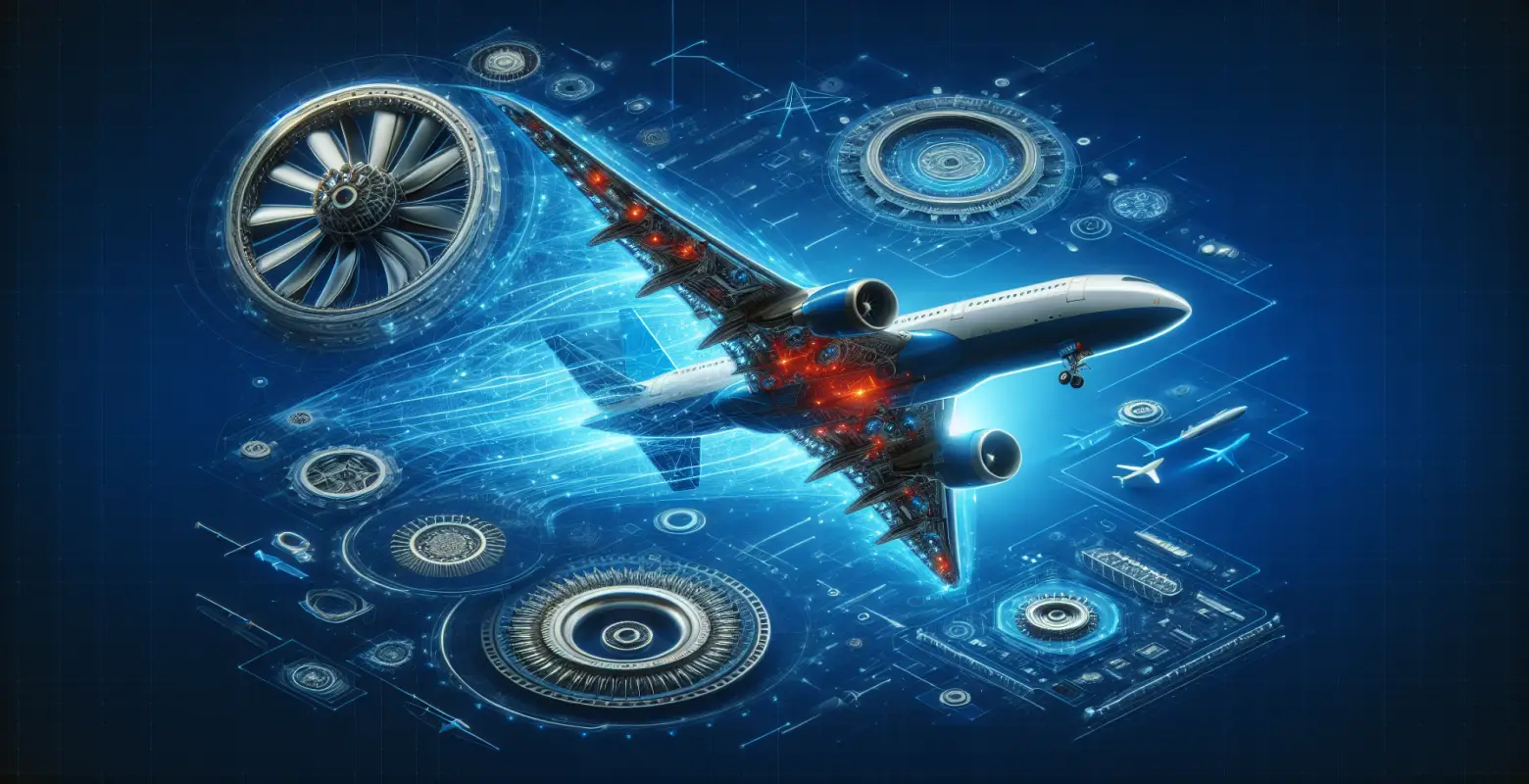What collision avoidance systems are used in modern airplanes?
Introduction
Aviation safety is a key aspect that has always attracted the attention of both passengers and industry professionals. As the number of commercial and private flights increases, the need to ensure a safe airspace becomes more urgent. One of the most important elements in this puzzle is collision avoidance systems, which help prevent accidents at high altitudes. In this article, we will take a closer look at modern technological solutions used in aircraft to ensure the safety of passengers and crew. Understanding these systems is crucial not only for industry specialists but also for anyone who wants to better understand how modern aviation works.
TCAS Technology: Airborne Collision Avoidance System
What is TCAS? The Traffic Collision Avoidance System (TCAS) is one of the fundamental tools used in modern aircraft to prevent collisions. It operates by monitoring air traffic around the aircraft. TCAS uses transponder signals, which are standard in civil aviation, to determine the position, altitude, and speed of other aircraft nearby.
How does TCAS work? The TCAS system continuously analyzes air traffic data and identifies potential collision threats. When it detects an approaching conflict, it generates auditory and visual warnings for pilots, and in some cases, recommends avoidance maneuvers such as climbing or descending. This allows pilots to react appropriately and avoid collisions.
Advantages and disadvantages of TCAS One of the main advantages of TCAS is its real-time operation, allowing for quick responses to changing conditions in the airspace. However, this system is not without its drawbacks. Its effectiveness depends on the proper functioning of transponders on other aircraft, as well as the pilots' ability to interpret the received data.
ADS-B: Modern Alternative and Complement to TCAS
What is ADS-B? Automatic Dependent Surveillance-Broadcast (ADS-B) is another step in the evolution of collision avoidance systems. Unlike TCAS, which relies on active signal exchange, ADS-B involves broadcasting information about its own position, speed, and altitude via satellites to other units and ground stations.
How does ADS-B work? ADS-B enables more precise tracking of air traffic by updating positional data frequently. This information is available to other aircraft equipped with ADS-B and to air traffic control, enhancing situational awareness for all participants in air traffic.
Benefits of using ADS-B The ADS-B system offers many benefits, including increased accuracy and range for monitoring air traffic. Additionally, based on satellite technology, ADS-B does not require radar infrastructure, making it more flexible, especially in hard-to-reach areas.
FLARM: Specialized System for General Aviation
What is FLARM? FLARM is a system primarily designed for smaller aircraft such as gliders, helicopters, and small planes that often operate in airspace without radar surveillance. FLARM is a compact and affordable solution that enhances safety in general aviation.
How does FLARM work? Similar to ADS-B, FLARM relies on broadcasting information about its position and movement to other units equipped with this system. It operates at short distances, making it ideal for operations in tight spaces like sports airfields.
Applications and limitations of FLARM FLARM is particularly useful in high-traffic environments where there is a risk of collisions due to close proximity between aircraft. However, its range is limited compared to systems like TCAS or ADS-B, restricting its use to specific situations and types of flights.
Collision Avoidance Systems in Unmanned Aircraft
Challenges related to drones With the increasing popularity of unmanned aerial vehicles (UAVs), there is a need to integrate these units into existing air traffic. Drones, often operating at low altitudes, must have their own collision avoidance systems to avoid posing a threat to other airspace users.
Modern solutions for UAVs Various technologies are used for drones, such as Detect and Avoid (DAA), which utilize optical, radar, and lidar sensors to identify and avoid obstacles. Such systems are crucial for safely operating drones near airports and other high-traffic areas.
Challenges and Future of Collision Avoidance Systems
Potential challenges Introducing and developing collision avoidance systems comes with numerous challenges. These include integrating different technologies and standards, which can be difficult due to the diversity of operators and aircraft equipment manufacturers. Additionally, maintaining compliance with international regulations and standards often requires complex certification procedures.
Future of collision avoidance technology The development of collision avoidance technology is inevitable, especially in the context of the dynamic growth of commercial and unmanned aviation. In the future, we can expect greater involvement of artificial intelligence in decision-making processes and further integration of systems on a global scale.
Summary
Collision avoidance systems play a crucial role in ensuring flight safety. Technologies such as TCAS, ADS-B, FLARM, and modern solutions for drones are indispensable in modern aviation. Each of these systems has its unique applications and limitations, but together they form a comprehensive ecosystem that is constantly evolving. As aviation becomes more complex and diverse, the development and improvement of these technologies will be crucial to ensuring safety in both airspace and on the ground.






Number of comments: 0